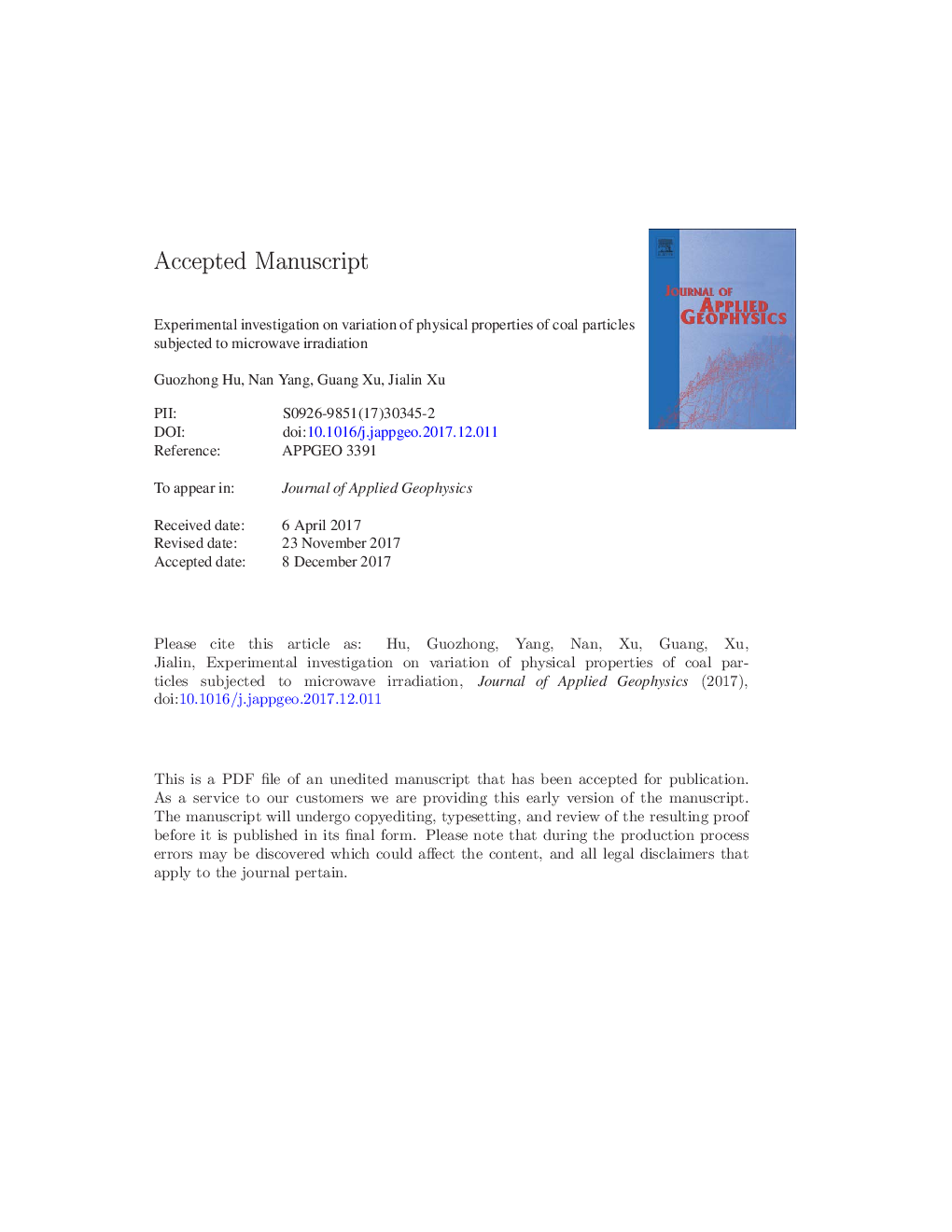| Article ID | Journal | Published Year | Pages | File Type |
|---|---|---|---|---|
| 8915484 | Journal of Applied Geophysics | 2018 | 15 Pages |
Abstract
The gas drainage rate of low-permeability coal seam is generally less than satisfactory. This leads to the gas disaster of coal mine, and largely restricts the extraction of coalbed methane (CBM), and increases the emission of greenhouse gases in the mining area. Consequently, enhancing the gas drainage rate is an urgent challenge. To solve this problem, a new approach of using microwave irradiation (MWR) as a non-contact physical field excitation method to enhance gas drainage has been attempted. In order to evaluate the feasibility of this method, the methane adsorption, diffusion and penetrability of coal subjected to MWR were experimentally investigated. The variation of methane adsorbed amount, methane diffusion speed and absorption loop for the coal sample before and after MWR were obtained. The findings show that the MWR can change the adsorption property and reduce the methane adsorption capacity of coal. Moreover, the methane diffusion characteristic curves for both the irradiated coal samples and theoriginal coal samples present the same trend. The irradiated coal samples have better methane diffusion ability than the original ones. As the adsorbed methane decreases, the methane diffusion speed increases or remain the same for the sample subjected to MWR. Furthermore, compared to the original coal samples, the area of the absorption loop for irradiated samples increases, especially for the micro-pore and medium-pore stage. This leads to the increase of open pores in the coal, thus improving the gas penetrability of coal. This study provides supports for positive MWR effects on changing the methane adsorption and improving the methane diffusion and the gas penetrability properties of coal samples.
Related Topics
Physical Sciences and Engineering
Earth and Planetary Sciences
Geophysics
Authors
Guozhong Hu, Nan Yang, Guang Xu, Jialin Xu,
